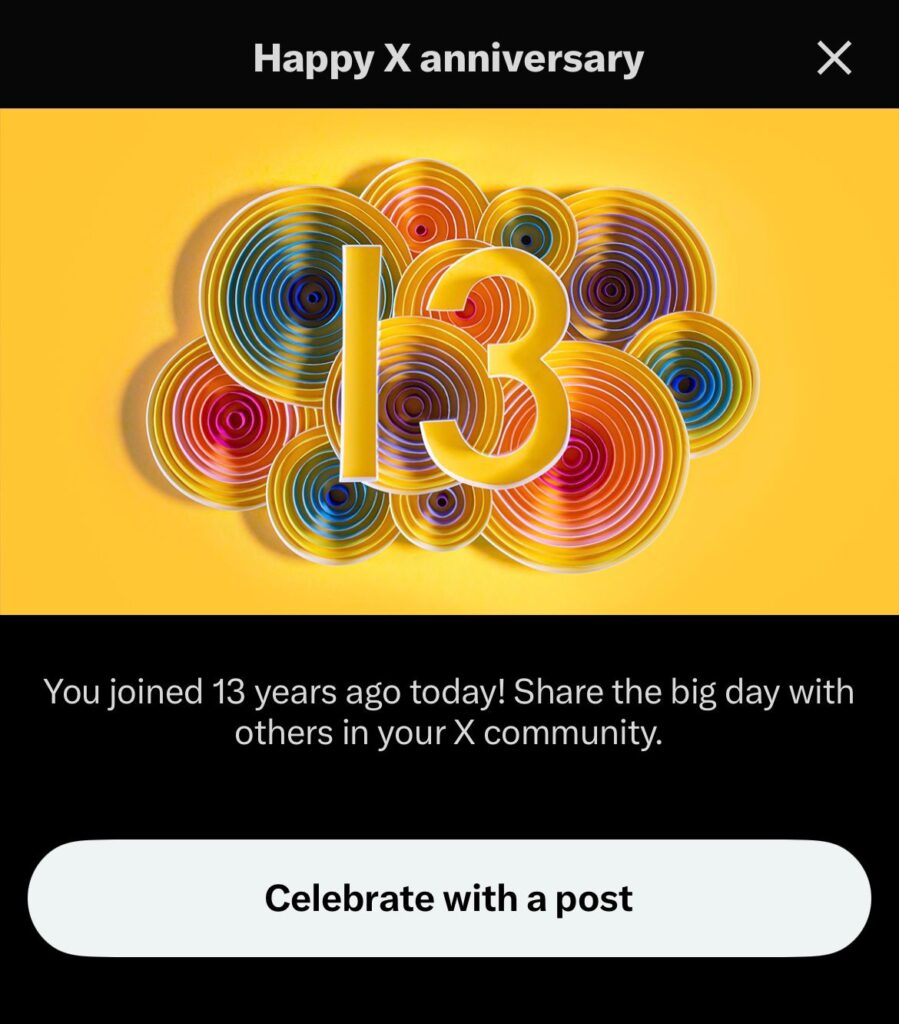This morning, I woke up to a single notification on my personal Twitter/X profile:

Thirteen years ago, a 20ish-year-old me opened her Twitter account. At that time, I was still in college and was super eager to learn and explore (not like I am not now), and Twitter was full of people willing to share valuable information.
But things changed a lot.
I am not going to go over what changed or if I think it is good or bad or whatnot, but the point I want to make with this introduction is simple: social media is not a static place but an ever-changing community.
The Beginnings of Social Media
If you have been around for some time, maybe you remember when MySpace, Hi5, and Friendster started. These platforms were simple in their design but started the Social Media revolution by allowing people to create digital profiles, connect with friends, share content, and communicate in ways nobody had before.
Actually, in its origins, social media was a way to connect. Back in 2004, when “TheFacebook” launched, it was a BIG yearbook: a student directory featuring photos and basic information limited to Harvard students.
Back in college, we will talk about how social media was revolutionizing marketing and how businesses could “start taking advantage” of the opportunity social media will bring—there were no ads available, all growth was done organically—and the hype was at all times high! Early adopters quickly grasped the power of engaging with audiences on platforms like Facebook and Twitter.
It wasn’t about hard-selling products but about building relationships and fostering brand loyalty.
Social Media Today
Social media as we know it today is not even near to what social media was 13 years ago. Actually, social media is a great example of how societies and communities evolve: communities on social media are not static—they are living, breathing communities that adapt and grow over time just like every other ancient civilization would have. What started as simple online forums and chat rooms have transformed into vibrant communities centered around shared interests, passions, and causes.
Social media has become a virtual melting pot where people from all walks of life come together to learn, share, and collaborate.
One of the most fascinating aspects of social media is its ability to facilitate collective learning and knowledge sharing. Are you looking to learn how to do something? Chances are that someone has made a video tutorial already, and you could probably search for it on YouTube. Information FLOWS online from experts, influencers, and peers alike.
The Complexity of an Ever-Changing Field
Of course, the more evolved each platform has gotten, the more challenging to navigate social media it is.
The competition for attention has grown exponentially—everyone wants to be an influencer or have 15 seconds of fame—which is one of the main causes of fatigue among users. It is not uncommon for people to say they are tired, need a break from social media, or decide not to participate in certain conversations to avoid the overwhelming sensation of having all eyes on you.
And let’s not get started talking about the algorithm! The algorithm keeps learning, improving, and changing, often disrupting organic reach and forcing people and brands to adapt and change constantly.
What Will The Future Bring To Social Media?
Honestly, HONESTLY… We don’t know 😊
There is only one thing we can tell you for sure: we are not near the end of the evolution of social media. Soon, more things will come—like AI integrations, which are already happening—more features and updates will be released, and new challenges will arise.
We are EAGER to see what comes next for Social Media. And to celebrate another 30 years of exploring all platforms (except for Twitter/X, we probably should close that profile now, LOL).






